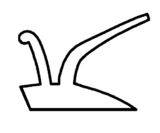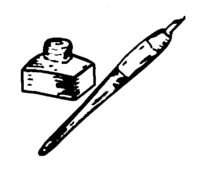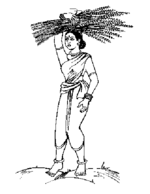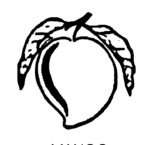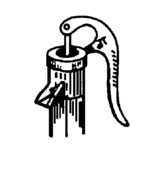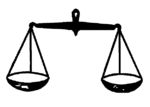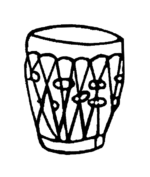List of political parties in India
India has a multi-party system with recognition accorded to national and state and district level parties. The status is reviewed periodically by the Election Commission of India (ECI). Other political parties that wish to contest local, state or national elections are required to be registered by the Election Commission of India. Registered parties are upgraded as recognised national or state level parties based upon objective criteria. A recognised party enjoys privileges like a reserved party symbol,[A] free broadcast time on state run television and radio, a consultation in setting of election dates and giving input in setting electoral rules and regulations.[1]
 |
|---|
| This article is part of a series on the politics and government of India |
|
National coalitions
|
|
|
This listing is according to the 2019 Indian general election and Legislative Assembly elections and any party aspiring to state or national party status must fulfil at least one of the concerned criteria. In addition, national and state parties have to fulfill these conditions for all subsequent Lok Sabha or State elections, or else they lose their status.[1] As per latest publication from Election Commission of India, the total number of parties registered was 2598, with 8 national parties, 52 state parties and 2538 unrecognised parties.[2][3][4][5][6]
All registered parties contesting elections need to choose a symbol from a list of available symbols offered by the EC. All 28 states of the country along with the union territories of Jammu and Kashmir, National Capital Territory of Delhi and Puducherry have elected governments unless President's rule is imposed under certain conditions.
National parties
- A party should win 2% of seats in the Lok sabha from at least three different states.[8]
- At a general election to Lok Sabha or Legislative Assembly, the party polls 6% of votes in any four or more states and in addition it wins four Lok Sabha seats.
- A party gets recognition as a state party in four states.
| Name | Abbreviation | Foundation year |
Founder(s) | Party Supremo [D] | Party symbol | Headquarters | |
|---|---|---|---|---|---|---|---|
| All India Trinamool Congress[E] | AITC | 1998 |  |
30B, Harish Chatterjee Street, Kolkata-700026 (Kolkata) | |||
| Bahujan Samaj Party | BSP | 1984 | 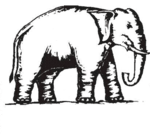 Elephant |
12, Gurdwara Rakabganj Road, New Delhi-110001 (Delhi) | |||
| Bharatiya Janata Party | BJP | 1980 |
|
 Lotus |
6-A, Deen Dayal Upadhyaya Marg, Mandi House, New Delhi-110002 (Delhi) | ||
| Communist Party of India | CPI | 1925 |
|
 |
Ajoy Bhavan, 15, Indrajit Gupta Marg, New Delhi-110002, (Delhi) | ||
| Communist Party of India (Marxist) | CPI(M) | 1964 |  |
27-29, A. K. Gopalan Bhavan, Bhai Vir Singh Marg, New Delhi-110001 (Delhi) | |||
| Indian National Congress | INC | 1885 |
|
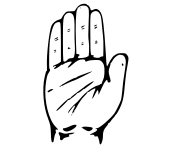 |
24, Akbar Road, New Delhi-110001 (Delhi) | ||
| Nationalist Congress Party | NCP | 1999 |  |
10, Bishambhar Marg, New Delhi-110001 (Delhi) | |||
| National People's Party[E] | NPP | 2013 |  |
M.G. Avenue, Floor, MDU Building, Imphal- 795001 (Manipur) | |||
State parties
- A party should secure atleast 6% of valid votes polled and win atleast 2 seats in a state assembly and 1 seat in Lok Sabha general election.
- A party should win minimum three percent of the total number of seats or a minimum of three seats in the Legislative Assembly.
- A party should win at least one seat in the Lok Sabha for every 25 seats or any fraction thereof allotted to that State.
- Under the liberalised criteria, one more clause that it will be eligible for recognition as state party if it secures 8% or more of the total valid votes polled in the state.[9]
Unrecognised parties
See also
- List of political parties
Notes
- A If a party is recognised as a national or state party, its symbol is reserved for its exclusive use in the country or in the state.[14][15]
- B In all States/U.T.s except in the State of Assam, where its candidates will have to choose a symbol from out of the list of free symbols specified by the Commission.
- C In addition to those included, the total is 1,761.
- D Current leaders are presidents of their respective parties and not necessarily the leaders of their legislative group in the Indian Parliament.
- E Recently Trinamool Congress and National People's Party were also recognised as National parties by the Election commission of India.
References
- "Registration of political Parties". FAQs. Election Commission of India. Retrieved 21 January 2013.
- "List of Political Parties & Symbol MAIN Notification". Election Commission of India. 15 March 2019.
- "Amendment Notificaiton - List of Registered Unrecognised Parties and Symbols after 15 March 2019". Election Commission of India. 1 April 2019.
- "Amendment Notificaiton - List of Registered Recognised Parties and Symbols & List of Registered Unrecognised Parties and Symbols after 1 April 2019". Election Commission of India. 25 September 2019.
- "Amending notification regarding political parties and their eletion symbol dated 10.01.2020". Election Commission of India. 15 January 2020.
- "Merger of Jharkhand Vikas Morcha (Prajatantrik), a recognized State Party in the State of Jharkhand with the Bharatiya Janata Party". Election Commission of India. 6 March 2020.
- "Dynamics of elevation of political parties to State or National Party". Press Information Bureau. 8 March 2014. Retrieved 8 May 2015.
- "When is a Political Party recognized as a National or State Party?". FACTLY. 28 January 2017. Retrieved 17 October 2018.
- "Amendment of the Election Symbols (Reservation and Allotment) Order, 1968. Allotment of common symbol to candidates of registered un-recognized political parties". Press Information Bureau. 17 October 2011. Retrieved 8 May 2015.
- "Manjhi's HAM recognised by poll panel". The Statesman. 19 July 2015. Retrieved 25 November 2016.
- "Allotment of Common Symbol -10B letter dt 15.9.15" (PDF). Election Commission of India. 15 September 2015. Retrieved 25 November 2016.
- "June 2015 Notification" (PDF). Election Commission of India. p. 2. Retrieved 17 September 2016.
- "Contact Us". Retrieved 27 November 2019.
- "Names of National, State, registered-unrecognised parties and the list of free symbols" (PDF). Election Commission of India. 12 March 2014. Archived from the original (PDF) on 22 May 2015. Retrieved 8 May 2015.
- "State Party List" (PDF). Election Commission of India. 13 December 2016. Archived from the original (PDF) on 14 February 2017.
Further reading
- Subrata K. Mitra and V. B. Singh. 1999. Democracy and Social Change in India: but parties have to be 70per of decision A Cross-Sectional Analysis of the National Electorate. New Delhi: Sage Publications. ISBN 81-7036-809-X (India HB) ISBN 0-7619-9344-4 (U.S. HB).
- Subrata K. Mitra, Mike Enskat, Clemens Spiess (eds.). 2004. Political Parties in South Asia. Greenwood: Praeger.














